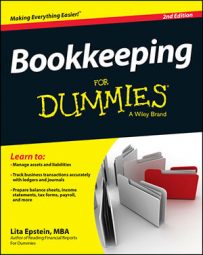Most benefits are tax-exempt, or not taxed. Healthcare and retirement benefits are the most common of this type of benefit. In fact, accident and health benefits and retirement benefits make up the largest share of employers’ pay toward employees’ benefits.
Luckily, not only are these benefits tax-exempt, but anything an employee pays toward them can be deducted from the gross pay, so the employee doesn’t have to pay taxes on that part of his salary or wages.
For example, if an employee’s share of health insurance is $50 per pay period and he makes $1,000 per pay period, his taxable income is actually $1,000 minus the $50 health insurance premium contribution, or $950. As the bookkeeper, you calculate taxes in this situation on $950 rather than $1,000.
The money that an employee who contributes to the retirement plan you offer is tax deductible, too. For example, if an employee contributes $50 per pay period to your company’s 401(k) retirement plan, that $50 can also be subtracted from the employee’s gross pay before you calculate net pay.
So if an employee contributes $50 to both health insurance and retirement, the $1,000 taxable pay is reduced to only $900 taxable pay. (According to the tax table for that pay level, his federal withholding taxes are only $71, a savings of $15 over a taxable income of $1,000, or 15 percent of his health and retirement costs.)
Employer obligations for providing healthcare benefits changed with the passage of the Patient Protection and Affordable Care Act in 2010. There are now four sets of rules regarding who must provide what benefits. Smaller employers also may be eligible for government assistance to provide health benefits for their employees. The four levels include
Employers with 50 or more employees
Employers with up to 50 employees
Employers with fewer than 25 employees
Self-employed
The U.S. Small Business Administration offers webinars for small business owners to learn more about how the new law impacts their business.
You can offer a myriad of other tax-exempt benefits to employees, as well, including:
Adoption assistance: You can provide up to $12,970 per child that an employee plans to adopt without having to include that amount in gross income for the purposes of calculating federal withholding taxes in the current tax year. The value of this benefit must be included when calculating Social Security and Medicare taxes, however.
Additional benefits can be an unused tax credit that can be carried forward for up to five tax years. You must develop a written plan for adoption assistance that meets the rules of the IRS, which you can find in Publication 15-B, “Employer’s Tax Guide to Fringe Benefits.”
Athletic facilities: You can offer your employees the use of a gym on premises that your company owns or leases without having to include the value of the gym facilities in gross pay. In order for this benefit to qualify as tax-exempt, the facility must be operated by the company primarily for the use of employees, their spouses, and their dependent children.
Dependent care assistance: You can help your employees with dependent care expenses, which can include children and elderly parents, provided you offer the benefit in order to make it possible for the employee to work.
Education assistance: You can pay employees’ educational expenses up to $5,250 without having to include that payment in gross income. Any amounts provided in addition to $5,250 would be taxable.
Employee discounts: You can offer employees discounts on the company’s products without including the value of the discounts in their gross pay, provided the discount is not more than 20 percent less than what’s charged to customers. If you only offer this discount to high-paid employees, then the value of these discounts must be included in gross pay of those employees.
Group term life insurance: You can provide group term life insurance up to a coverage level of $50,000 to your employees without including the value of this insurance in their gross pay. Premiums for coverage above $50,000 must be added to calculations for Social Security and Medicare taxes.
Meals: Meals that have little value (such as coffee and doughnuts) don’t have to be reported as taxable income. Also, occasional meals brought in so employees can work late also don’t have to be reported in employees’ income.
Moving expense reimbursements: If you pay moving expenses for employees, you don’t have to report these reimbursements as employee income as long as the reimbursements are for items that would qualify as tax-deductible moving expenses on an employee’s individual tax return. Employees who have been reimbursed by their employers can’t deduct moving expenses for which the employer paid.

